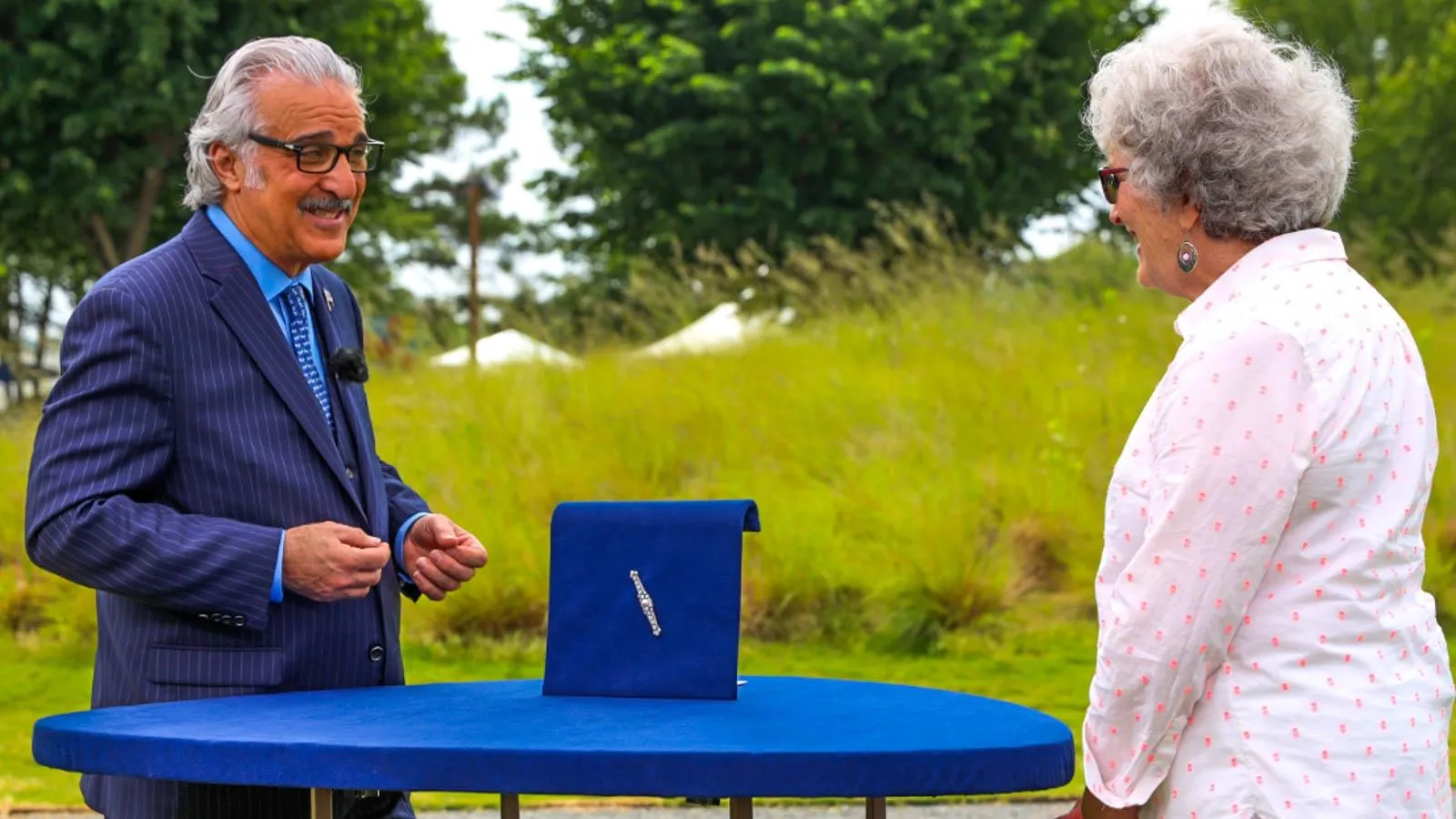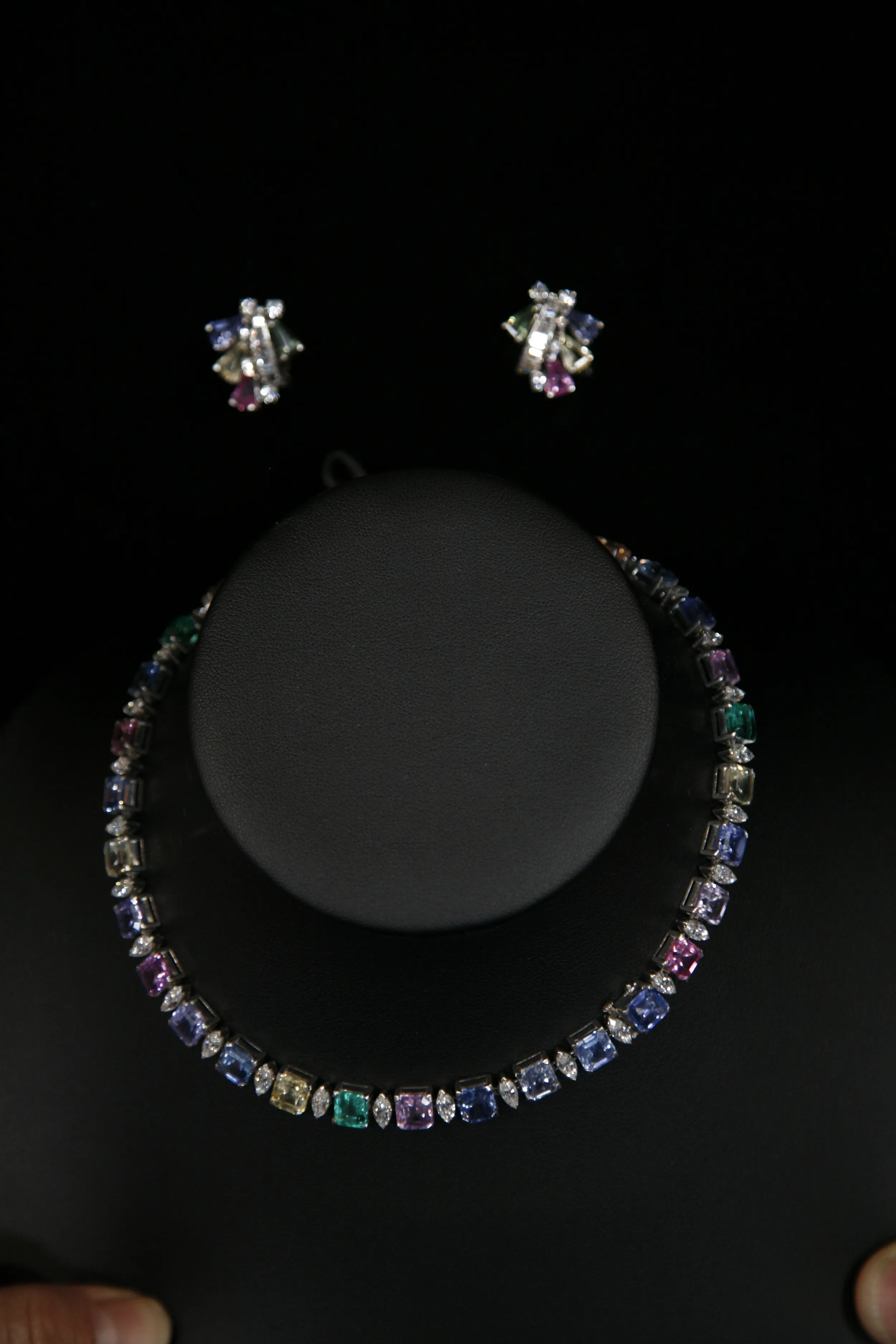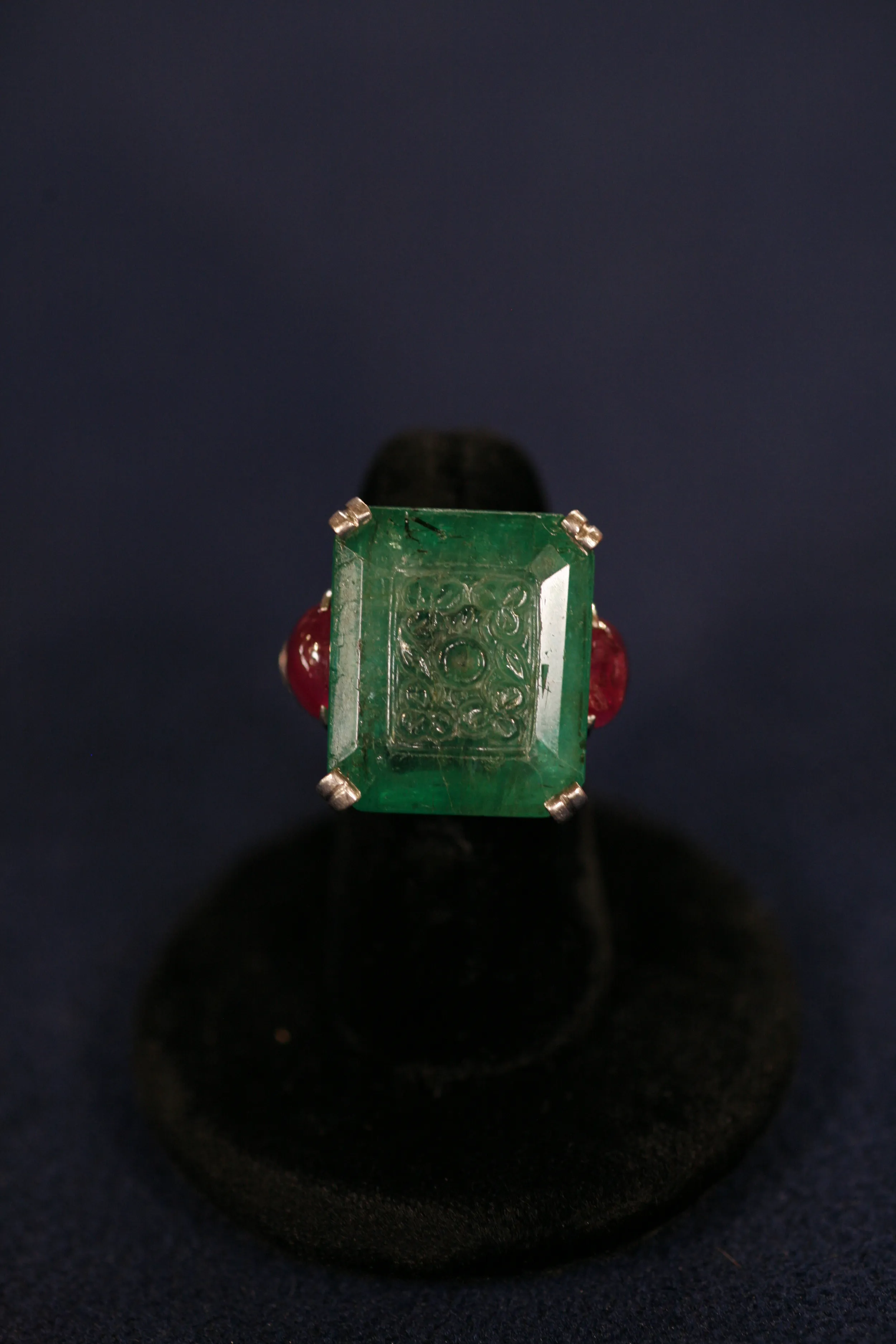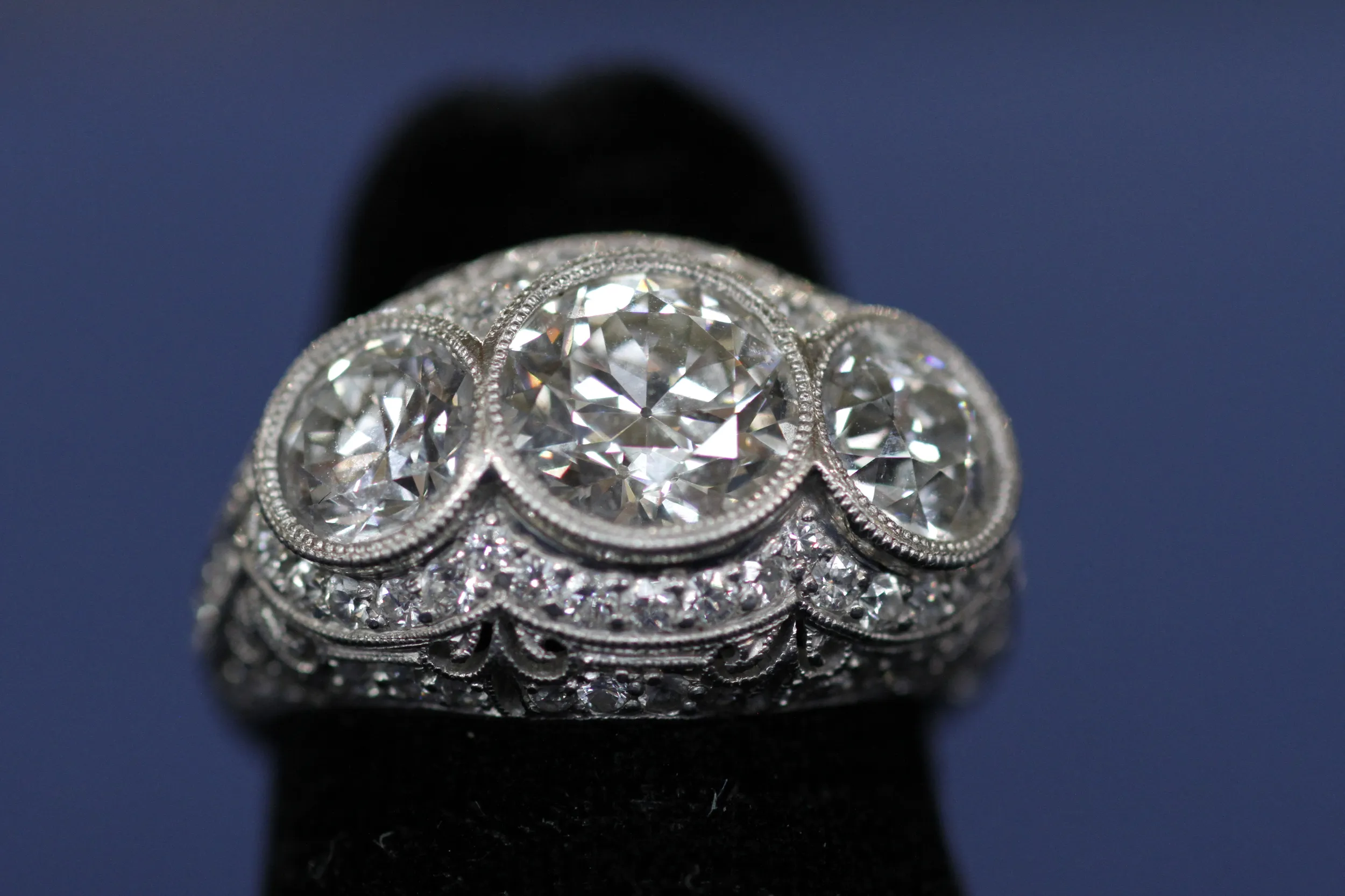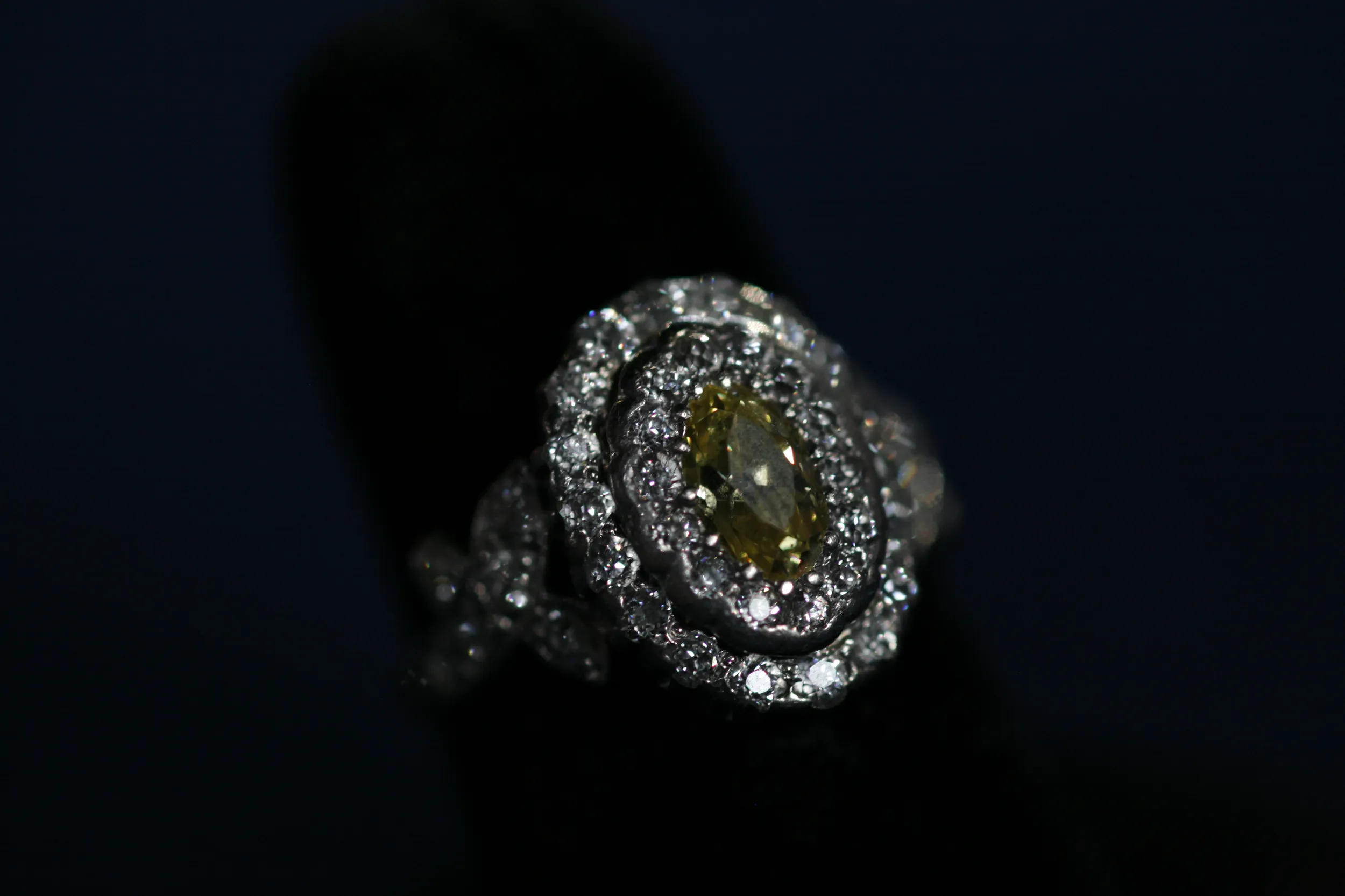GUEST: I inherited it, from my mother, who received it from her grandmother. They lived in New York City, and this was part of a… lorgnette?
APPRAISER: I'm going to take it off so you can show everybody the way you showed me.
GUEST: All right. It was opera glasses, and it had the glasses, and then it had the piece that you held the glasses with, so that you could look at the libretto at the opera. And they were members of the Metropolitan Opera in New York. And then eventually it was made into a pin.
APPRAISER: One thing about jewelry is it, it's a wonderful recyclable. (chuckles) Thousands of years it gets reused, it gets rearticulated, remade. When I look at jewelry from somebody who sits at the bench. When you told me that, right away I flip it over and go to the back of the jewelry. I'm looking for evidence that it was lorgnette. When you hit the button on the pin, the glasses, the lenses would have flipped out and unfolded. It's a lot of hardware that has to be hidden in a small space.
GUEST: Mm-hm.
APPRAISER: We have what we call the catch pin and joint.
GUEST: Right.
APPRAISER: But, in my opinion, they've been there forever. If it was a lorgnette, there would have been evidence of hinges and tubings and hardware that held the spring. There's no evidence of any of that going on in the back of this.
GUEST: (chuckles) Okay.
APPRAISER: So, my opinion is, it's a great story. (chuckles) You almost had me. But it was never a lorgnette. It was always a stick pin or a brooch.
GUEST: Mm-hmm.
APPRAISER: The pin would be classified as Belle Époque, which translates to "beautiful age." This pin is probably from 1905 to 1915.
GUEST: Mm-hmm.
APPRAISER: It has no marks on it that give us a maker's mark.
GUEST: Oh.
APPRAISER: What it looks like to me is it's made in America. You see these big diamonds on here? These diamonds weigh half a carat each.
GUEST: Whew.
APPRAISER: Now, they're old European cuts. We have one, two, three, four, five, six-- 12 at half a carat, some a little bigger.
GUEST: Mm-hmm.
APPRAISER: When you weigh all the diamonds up, it's ten carats total weight. They're a very, very nice color. Grading them in the pin, most likely somewhere in that F to G range. And they're very, very clean. They're at least VS or better. What that stands for is "very slightly." It means that you can't see, with your naked eye, any inclusions. But I'm a pearl guy.
GUEST: (chuckles)
APPRAISER: I love the diamonds. I love that it's in platinum. But the pearl, it's what we call button-shaped. It is, in fact, a natural pearl. It happens to have an exceptional size. It's ten-millimeter. The luster is incredible. The nacre, which is the coating...
GUEST: Mm-hmm.
APPRAISER: that grew in the pearl naturally inside the mollusk. It just has this depth and this warmth. How do we know it's natural? You have to have it x-rayed. In my opinion, it's a natural pearl. Even with all those diamonds, if you broke it down, the pearl is worth as much as the diamonds. (chuckles) So if I put this into auction, I would put it in for $12,000 to $18,000. All right? I would expect it to do exceedingly well. I don't see it selling at the low. I would insure it for $28,000.
GUEST: Thank you.

